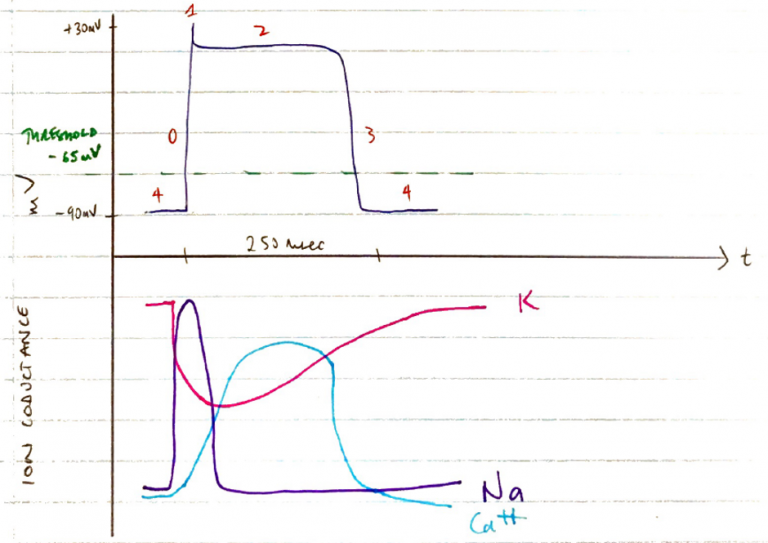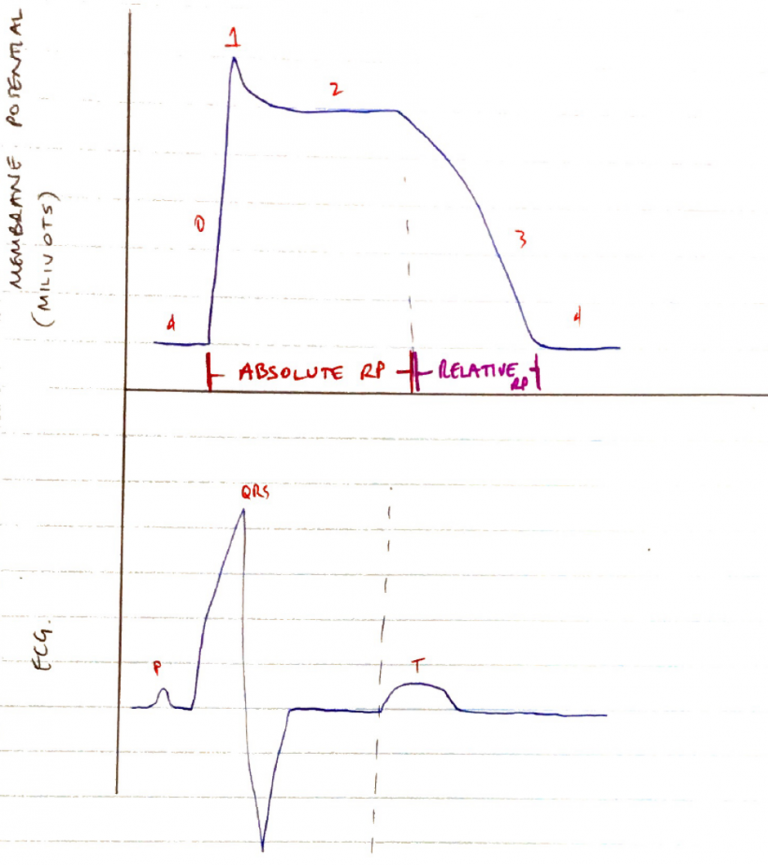G2i: Fast Action Potential
- Site:
- Normal atrial myocardial fibres
- Normal ventricle myocardial fibres
- Purkinje fibres
- Duration: 250 msec
- RMP: -90mV
Features:
• Ph 4: RMP – TRUE RMP
- Maintained by constant leak through INWARD RECTIFIER K+ CHANNELS
- Na+ & Ca2+ channels are closed
• Ph 0: Rapid Depolarisation
- A nearby AP causes the MP to rise above RMP
- Fast Na+ channels start to open one by one, Na+ leaks in
- At -65mV THRESHOLD is reached
- All Fast Na+ channel open → massive Na+ influx
- Depolarises MP to a peak +30mV
- At -55mV h-gates of Na+ channels close
- But at -40mV Slow L-type Ca2+ channel open & Ca2+ small but steady influx
• Ph 1: Early Repolarisation
- Some K+ channel open briefly
- Outward flow K
- Returns MP to 0mV
• Ph 2: Plateau
- Ca2+ channel still open
- Small constant influx of Ca2+
- K+ leaks out through DELAYED RECTIFIER K CHANNELS
- Two counter-currents electrically balanced
- ∴Plateau maintained
REGULATION: Myocardial myocytes are stimulated by AP generated by PM cells
Refractory Period: the time from Ph 0 until the next possible depolarisation of a myocyte
- Cardiac myocytes have different degrees of refraction → reflect the number of Na+ channels which have recovered from their inactive state
- Cardiac myocytes have longer RF due to Ph 2
- Protects ventricles emptying & allows filling prior to next contraction
- Prevents tetany

